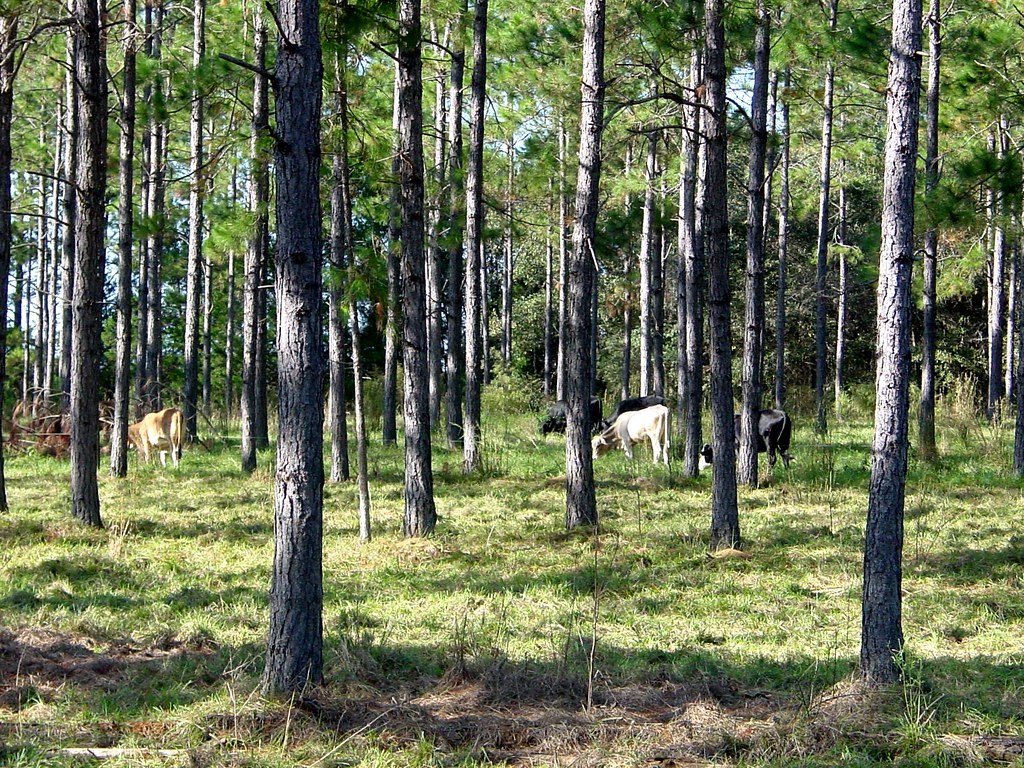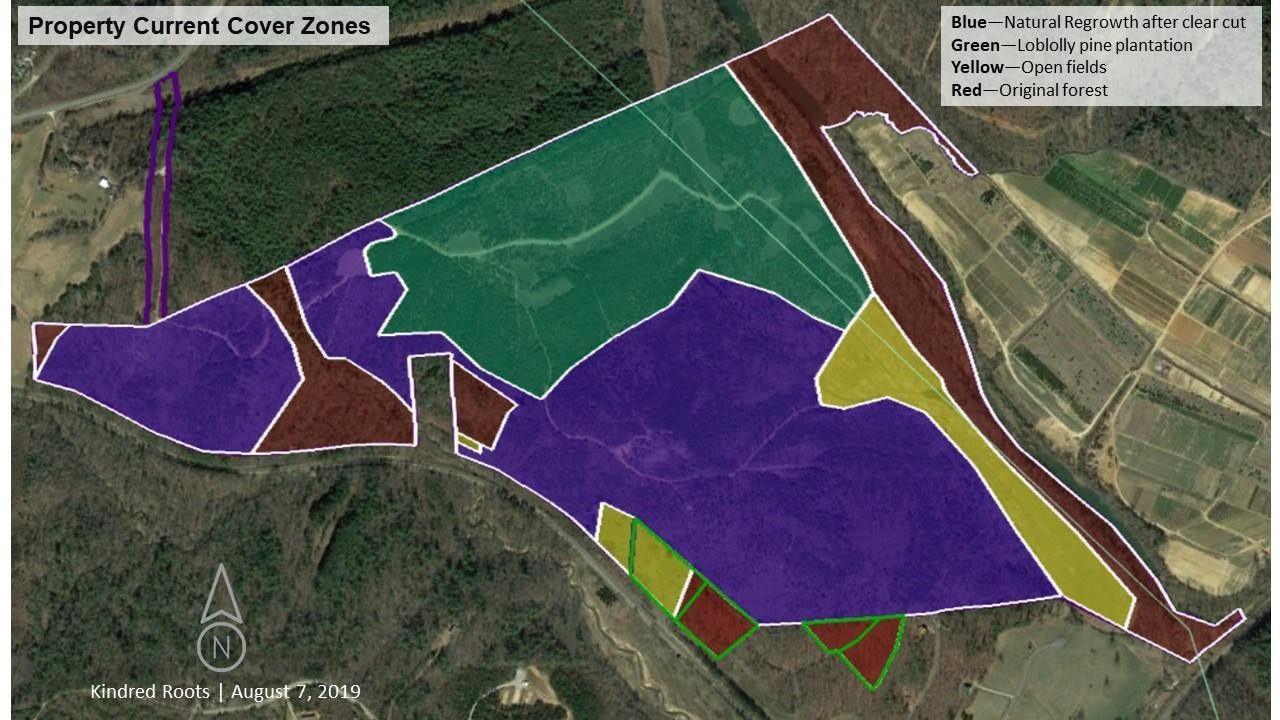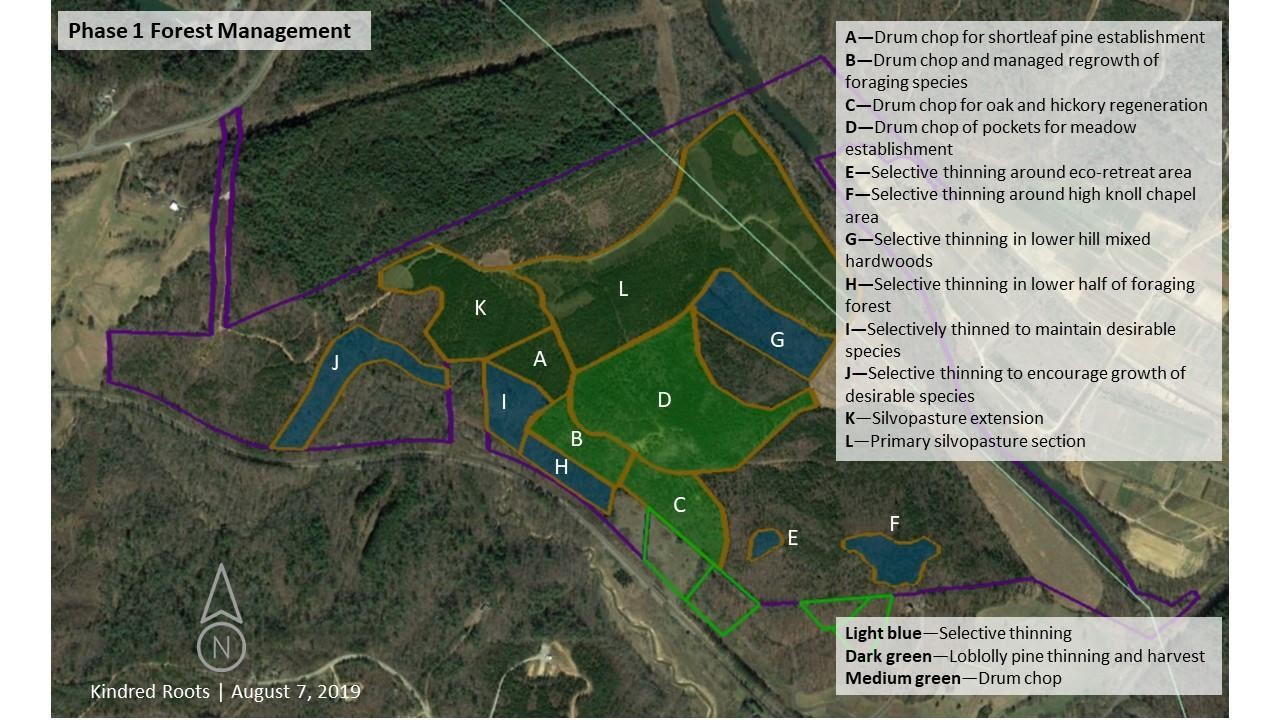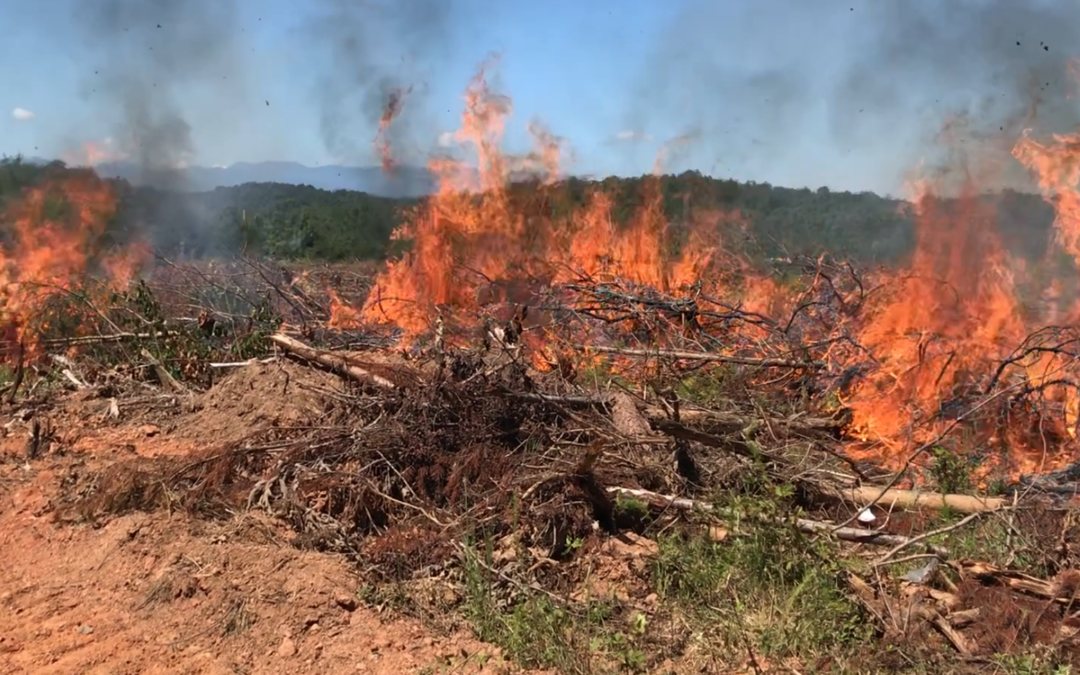Catawba Run is a mix of pine plantation of various ages, interspersed with old fields managed for quail hunting and farmland producing hay and grains. Regrowth after clear cut, loblolly pine plantation, and some old native forests including hickory, red maple and magnolia make up the forested areas of the property. Over the next 10 years, we plan to transform these forests into healthy productive landscapes that preserve the remaining patches of old-growth forest, produce native short-leaf pine, loblolly pine and mixed hardwoods for commercial production, and provide high quality forage for livestock to graze among the trees.

Silvopasture is the intentional combination of trees, forage plants and livestock together as an integrated, intensively-managed system. Pictured here are cows grazing in a forest stand.
With the help of NC Forest Service Staff, restoration of the forest at Catawba Run got underway in July with the first of several planned drum-chop and burn treatments in poorly managed forest regrowth areas on the property. The goal of the treatment is to clear away the dense thicket of stunted loblolly pine and other shrubs to make way for new plantings of short leaf pine, mixed hardwoods including oak and hickory, and other plantings of wildlife forage species.
This year’s treatment of 10 acres is about one third of the total of 34 acres that will be restored using this practice. Following the drum-chop in July, forest service personnel supervised a prescribed burn in August. Plans are in place and the trees have been ordered to replant the 10 acres with slash pine seedlings this winter. With this first in a series of forest management projects under our belt, we have begun the process of reclamation and restoration of the forest lands at Catawba Run.

There are Three Different Kinds of Forested Areas at Catawba Run
A Closer Look at Forest Regeneration
Drum-chopping is a commonly used practice in the eastern region of North Carolina, but is rarely used in the Piedmont and Mountain regions. NC Forest Service staff recommended the practice for Catawba Run’s unmanaged regrowth because it was well suited to our management goals and it offered an opportunity to demonstrate this practice in the Piedmont to encourage other forest owners in the region to consider using it.
Drum-chopping involves the use off large wheel or drum full of water which is pulled behind a bulldozer with sharpened blade in front. The blade cuts through trees and shrubs near the ground and the drum follows behind, laying down the trees and shrubs in a thick mulch on the ground. Drum-chop is a cheaper alternative to heavier mechanical operations like cutting and raking, and also maintains the integrity and health of the soil for future planting. After chopping, the cut trees and shrubs are burned in place. This reduces the risk of wildfire and also creates an ideal environment for planting young trees.

Drum Chop and Forest Management at Catawba Run
Catawba Run is 275 acres of old growth, unmanaged regrowth, and sustainable pine plantation located in the Piedmont region of North Carolina, near Nebo, just west of Morganton. This land is the setting for Foragable Community’s next demonstration of our shared values: to use ecological management practices and resilience principles to restore the health and wellbeing of degraded landscape, and concurrently have a positive impact on the lives of people who participate in this vision of redemption and renewal.
The Catawba Indian Nation are the descendants of the original inhabitants of land that we call Catawba Run. The Catawba, or “the people of the river” pronounced yeh is-WAH h’reh in their native tongue, were farmers, renowned potters, and stewards of the land in most of the Piedmont of South Carolina, North Carolina, and Southern Virginia. Foragable Community acknowledges that Catawba Run is on this ancestral land.

